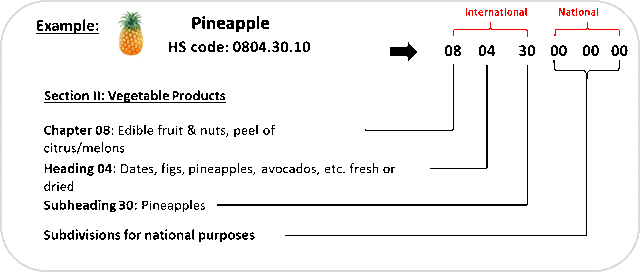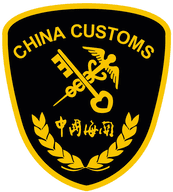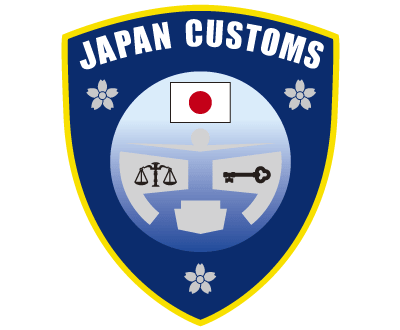Freight shipping between China and Japan | Rates – Transit times – Duties & Taxes – Advices
As the world’s leading exporter for several years, China has been supplying the world with its cheap products of relatively good quality. This competitiveness in terms of price is mainly due to the cheap labor of the product. With a great diversification of products, all kinds of goods are offered by the country’s suppliers. Thanks to this, many commercial partnerships have been created with the whole world, and particularly with its neighboring country Japan. China is indeed one of the main trade partners of the country.
Understanding the import of products between Japan and China is not a simple matter. Therefore, in this guide we will explain we will explain everything you need to know about shipping freight from China to Japan, from transporting your goods to regulations. In order to get the most appropriate import for your needs, follow our understanding step-by-step guide, whether you are an individual, a start-up, a small business or even a large company wishing to import or export goods between Japan and China.
Contact our DocShipper teams for any additional questions. We will evaluate your requests and advise you on the most suitable solutions for your project!
The different methods of transportation between China and Japan?
Japan is an archipelago located in the North-East of the Asian continent. China, on the other hand, is located on the Asian continent. Despite the proximity of these two countries, rail or road freight is impossible, as the two countries are not connected by land.
The shipping time from China to Japan varies depending on the mode of transport chosen.
Trade between these two countries is therefore done by sea freight, as well as by air freight.
Below, you will find a comparison of these two types of freight, listing the advantages and disadvantages of each. We also list the major ports and airports. We’ll do the comparisons, and then you can choose the freight that suits you best!
Docshipper Note:
Need assistance with your shipment? Dont hesitate to contact us even for a simple question. Choose the option that suits you
Live chat with an expert Chat us on WhatsApp Fill the formNote DocShipper :
How can DocShipper help?
DocShipper is an international freight forwarder that organizes air, sea (LCL and FCL), road, rail or intermodal shipments to and from China without you having to do anything. Don’t worry. We operate anywhere in the world and get you through all customs without incident. So do not hesitate to contact us.

Sea freight from China to Japan
Sea freight is often used to export goods to Japan due to its efficiency and reliability.
Overview – Trade relations between China and Japan
According to the most recent data of 2021, trade between China and Japan has continued to grow despite the COVID-19 pandemic. Regarding sea freight, China is Japan’s largest trading partner and accounts for a significant share of its imports and exports.
According to data from the Japan Maritime Center, the total sea freight trade volume between China and Japan reached 260 million tons in 2020, an increase of 3.2 percent over the previous year. China’s imports from Japan rose 1.9 percent to 61.07 million tons, while Japan’s exports to China rose 4.1 percent to 199.38 million tons.
To transport these goods, sea freight is a popular means of transportation for exporters and importers. Rather cheap, sea traffic is very important in international trade. Ships carry mainly manufactured goods in large quantities.
In China, goods can leave or arrive from various major ports: Guangzhou Port, Shanghai Port, Shenzhen Port, Ningbo Port, Qingdao Port, Tianjin Port, Hong Kong Port, or Xiamen Port.
On the Japanese side, several ports are also able to receive and ship goods: the Port of Nagoya, the Port of Chiba, Yokohama, Kitakyushu, Kobe, Osaka, Tokyo…
DocShipper Tips:
If you have no time constraints, your goods are larger than 2 m3, and you are looking for a cheap means of transport, then sea freight is the ideal solution!
The main shipping seaports in China
Port of Shangaï
Having handled more than 717 millions tons of cargo in 2015, Shanghai Port is the largest in the world, in terms of traffic. Thanks to its ideal position, the world’s leading port is qualified as the main gateway to China’s foreign trade. Indeed, the port is located in the middle of the Chinese coast, at the mouth of the Yangtze River. The hinterland is also more easily accessible: multimodal transport allows to serve the most remote destinations, notably thanks to the important highway network with the help of road freight, as well as by sea freight thanks to the Yangste river.
Port of Ningbo / Zhoushan
Qualified as the world’s largest port in terms of tonnage, and the world’s fourth largest port in terms of traffic, Ningbo / Zhoushan Port received 890 millions tons of goods during 2015. The port of Ningbo / Zhoushan originated from the merger between the ports of Zhoushan and Ningbo, which were two neighboring ports. The port has the advantage of being connected with a very large part of China, thanks to its rail and sea transport services. It is also connected to other border countries.
We can also mention other less important Chinese ports, but with the capacity to receive cargo ships: Tangshan, Taicang, Xiamen, Tianjin, Qingdao, Guangzhou, Hong Kong, Shenzhen…
Port of Nagoya
Japan’s largest port by volume, the Port of Nagoya handled nearly 195 millions tons of cargo during 2019. Handling all types of cargo, this port handles ships from all over the world from the tip of Ise Bay, located on the east coast of Japan’s archipelago on the Pacific side. Since its opening on November 10, 1907, the port has continued to grow.
The port of Nagoya also has the distinction of being the country’s leading automobile export port. Indeed, more than 1.4 million cars are shipped every year.
Connected to more than 170 countries around the world, Japan’s largest port is a key entry point to the country.
Website: Nagoya Port Authority
Port of Chiba
Located inside Tokyo Bay, Chiba Port is the second largest port in Japan in terms of tonnage, but it is also the largest port in terms of surface area. Indeed, the port covers more than 24,800 hectares. Each year, Chiba Port handles an average of 167 million tons of cargo, which represents nearly 65,000 ships handled per year. Container ships mainly handle industrial cargo, importing oil, liquid gas, crude oil and other petroleum products into Japan, and exporting mainly vehicles, steel and chemical products.
We can also mention other less important Japanese ports, but with the capacity to receive cargo ships: Yokohama, Kitakyushu, Kobe, Osaka, Tokyo…





How much time does it take to ship freight from China to Japon?
Average sea freight shipping time from China to Japan is between 3–14 days.
Nagoya |
Chiba |
Yokohama |
Kitakyushu |
|
| Shanghai | 2 | 3 | 3 | 1 |
| Shenzhen | 8 | 5 | 5 | 4 |
| Guangzhou | 5 | 6 | 6 | 4 |
| Qingdao | 3 | 3 | 3 | 2 |
| Tianjin | 3 | 4 | 4 | 2 |
| Ningbo | 3 | 3 | 3 | 2 |
| Dalian | 3 | 4 | 4 | 2 |
The figures given above represent an average in days, the transit being carried out from port to port. They are given as an indication, and don’t take into account various factors such as the removal, the procedure of customs clearance, or the delivery.
What container can I choose for shipment between Japan and China ?
There are three standard container sizes:
- The 20’GP container, with a capacity of 33m3
- The 40′ GP container, with a capacity of 67m3
- The 40′ HC container, with a capacity of 76m3
For each of these container sizes, two options are available in terms of ocean freight:
DocShipper Tip:
For cargoes with a volume of less than 2 m3 air freight will be more interesting, compared to sea freight. With air freight, the delivery time will also be reduced: the goods will take less time to reach their final destination if transported by air.
Maritime grouping or LCL (Less than Container Load)
Conceived for shippers whose goods don’t fill a container completely, LCL is a system that groups orders from different customers with the same destination into a single container. This system is economically advantageous: the customer will only pay for the space needed for his goods, and not for the entire container. This means of transport is therefore particularly profitable for small volume shipments.
This type of freight will be interested in the following cases:
- The volume of goods shipped is relatively small
- The customer wishes to consolidate his shipments
- The customer wants to deliver to several recipients
- The weight of the goods to be shipped is too heavy, and air freight is not cost-effective for shipping
FCL (Full Container Load)
Conceived for shippers who require a full container for their goods, Full Container Load refers to a container owned by a single customer from the time the goods are loaded to their final destination.
The handling is relatively small and the costs are lower. The container is sealed from the production site to its final destination. Full Container Load is used more for large quantity purchases.
This method of shipment is not only cheaper in relation to the relatively large import volume, but also safer. This method of transport is particularly interesting for goods with a volume of more than 15 m3, and represents a lower cost than groupage.
DocShipper Tips:
This type of sea freight is recommended for shipments with a volume of more than 13 / 14m3. Even if the container is not completely filled, the cost will still be lower because of the low handling required at the port. This type of freight will also be safer.
Special transports
Using a shipping container to send goods to Japan can provide additional protection during shipping.
Reefer container
When goods are transported in a refrigerated container, the temperature is controlled in order to preserve them throughout their journey. Indeed, the goods using this type of transport are so-called “sensitive” goods, that is to say they are perishable, or of chemical origin. Thus, different parameters can be controlled, such as temperature, atmosphere regulation, or humidity level. These containers are available in multiple sizes in order to adapt to each shipper’s requirements.
Roro
The roll-on/roll-off mode of transportation, more commonly known as “Ro-ro”, was created to transport wheeled cargo, such as trailers, semi-trailers, automobiles, trucks, or railroad cars. Ro-ro ships carry goods that are driven and towed on their own wheels, in and out of the ship.
The advantage of this type of transport is undoubtedly the need for less physical handling, but also its low exposure to water or any other weather conditions. This is mainly due to the fact that the cargo is stowed in the vehicle decks during the entire journey.
The goods transported in Ro-Ro are safer, and this solution is the least expensive for the transport of special cargoes.
Bulk
The goods travelling by means of a “bulk carrier” are divided into two distinct categories :
- “Bulk cargoes“: they are transported in the hold of the ship
- “General cargoes“
Each ship has a specialty (coal, ore, etc.) defined according to the goods, whether liquid or solid, for which they are suitable to transport: coal, minerals, etc…
Out Of Gauge (OOG)
Out of Gauge containers are divided into two categories:
- The “Open Top Container“: This means of transport is used to carry finished products of a relatively large weight. With this type of cargo, the handling is important, because of its loading which must be done with an overhead crane or a crane.
- The “Flat Rack Container“: This means of transport is used to carry oversized (in height or width), bulky or heavy products.
Open Top Containers are used to transport goods that cannot be transported using standard size containers. It guarantees the safety of the goods, and requires less time for loading and unloading.
If you need information about the transportation of bulky goods, or any other type of goods, contact our DocShipper experts! We promise to respond within 24 hours, providing you with the solution that best suits your project.
How much does sea freight between China and Japan cost?
The cost of shipping by sea freight varies depending on the weight and volume of your goods. For these reasons, it is imperative to know these details in order to calculate the price.
According to the equivalence rule, the weight/volume ratio is “1 ton = 1 m3“.
- According to the above rule, sea freight, whether groupage or conventional, is established in Paying Units (PU). The UP unit of measure is equivalent to:
- or in volume expressed in cubic meters
- or in mass expressed in tons
Regardless of the unit of measurement, the number chosen will always be the one that is to the advantage of the carrier and corresponds to the highest number.
Example: The mass of a load is equal to 8 tons, and the volume is 10 m3. Here the price will be 10UP.
On the other hand, if the cargo has a mass equal to 9 tons and a volume of 4 m3, the price will be 9 UP.
As for the full container, the price will be determined on the basis of the “container package”. This means that the invoice will be based on the shipping company providing the container, as well as the type of container used.
Rate surcharges
Additional charges, over and above the rates initially charged by the carriers, depend on specific contexts.
BAF : Bunker Adjustment Factor
This surcharge, introduced following the first oil crisis in 1973, is a percentage applied to the initial cost of freight. This cost fluctuates with crude oil.
CAF : Currency Adjustment Factor
This surcharge is a percentage that is applied to the initial cost of the freight and the Bunker Adjustment Factor. To hedge against currency risks, shipping companies prefer to use freight rates that are calculated in dollars, especially because of the fluctuation of this surcharge with the rate of this currency.
THC : Terminal Handling Charge
This surcharge corresponds to the handling costs, which means the loading and unloading of the goods at the port.
When it comes to containers, the amount is fixed, and corresponds to the price of a container.
However, when it is a groupage, the amount is variable, and the price corresponds to the volume or weight.
ORC : Origin Receipt Charge
This surcharge is introduced only by Chinese ports. It must be paid at the departure of the Chinese ports. The country’s ports have chosen to introduce this tax in order to be able to finance their development in a rapid manner.
Port Congestion
When a ship is not allowed to unload its cargo at its port of destination due to congestion, shipping companies lose revenue. Indeed, ships sometimes wait up to several days before they can reach the docks to unload. To overcome this, they have decided to introduce a surcharge.
Surestaries (Demurrage)
When a shipowner takes too much time to load or unload goods, compared to the time initially fixed, it generates a loss of time, and thus a loss of money. To compensate for this, charterers have set up mandatory indemnities for shipowners.
This demurrage is therefore established when a charterer has taken longer to load and unload, whether or not it is due to his will, congestion or a strike.
In short, demurrage is the cost of leasing containers as long as the container is still in the port’s fleet and awaiting shipment.
The cost of shipping goods varies depending on many factors. If you have any questions about shipping, sourcing, or storage of your goods, feel free to contact our DocShipper experts! They will answer all your questions within 24 hours.
For all requests, contact our sea freight specialist between China and Japan, in order to provide you with the best solution at a competitive rate. Fill out our online form. For more information on this method of transport. You can also take a look at our dedicated page: Ocean Freight.

Air freight between China and Japan
Air freight to Japan is a fast and convenient option for shipping goods.
The different types of air freight
In order to get your goods to a destination as quickly as possible, air freight is the most appropriate mode of transportation. It will be the fastest way to get your product from point A to point B. This type of transport is also the most reliable. Indeed, air freight is used in particular for the transport of objects of great value, clothing, as well as seasonal goods, electronic products or / and goods having a significant risk of deterioration at sea.
Two types of air freight can be distinguished, both in terms of service and price:
- “Conventional” air cargo: Goods transported by conventional air cargo are carried on scheduled commercial flights of airlines such as Air China, All Nippon Airways, China Southern Airlines, or even AirAsia Japan, and exploit the empty spaces.
- “Express” airfreight: Goods transported by express airfreight use aircraft dedicated solely to airfreight. This solution is offered by courier companies, such as FedEx, DHL, UPS or even TNT, which offers door-to-door solutions.
The express service allows the delivery of goods in the shortest possible time. Regardless of their destination, they can be delivered by hand.
This service is an “all inclusive” solution, which means that the buyer does not need to clear low value shipments through customs himself. The cost of this type of transport is very competitive, especially for goods with a volume of less than 1m3.
Main Chinese airports
- CAN – Guangzhou Baiyun International Airport
- PEK – Beijing Capital International Airport
- CTU – Chengdu Shuangliu International Airport
- SHA – Shanghai Hongqiao International Airport
- KMG – Kunming Changshui International Airport
- PVG – Shanghai Pudong International Airport
- SZX – Shenzhen Baoan International Airport
Main Japan airports
DocShipper Tips:
If you have a time constraint, and your goods are larger than 2 m3, then sea freight is the ideal solution!
Why do we choose air transport?
- The speed
As we have said before, air freight is the fastest means of transportation. In the field of trade, speed has become one of the main criteria.
2. Schedule reliability
Since the departure and arrival flight times are scheduled in advance, they are relatively reliable. Moreover, if a good misses its flight, it will be able to take the next one, scheduled only a few hours later. This means that there will be very little delay in delivery.
3. Multiple destinations
Goods can be sent all over the world. This is due in part to the extensive network of destinations that airlines have, covering almost the entire world.
4. Low insurance premium
Because of the relatively short transit time, the insurance premium is quite low with this type of freight. Even though air freight is quite expensive compared to other types of cargo transportation, it still saves money in terms of insurance costs.
5. High level of security, reduced risk of theft and damage
The airport areas are very strict and controlled. Thus, thefts and damages are reduced. Security is therefore increased with the use of air cargo.
6. The need for storage and low storage
In terms of storage, air freight is advantageous because it requires very little. There is no need to have storage warehouses, as goods are shipped regularly and in small quantities. The goods also spend less time with customs, inspection and handling. They are released after only a few hours.
7. The need for low packaging
Air freight does not require as much packaging as other types of freight. This saves money by avoiding the need to employ the services of professional packers that are essential when using ocean freight. This will not only save you time, but also money.
8. The follow-up
When a shipper uses airfreight, he usually has a tracking service, offered by the courier companies. The goods can be tracked from their departure to their arrival using an application.
NOTE : Air transport is only one step in the import/export process of your goods. The international transport of goods, especially by air, must necessarily go through the administrative services, but must also be the subject of transport cost study, including airport charges. Don’t hesitate to call on our DocShipper experts to help you with all these steps!
What is volumetric weight?
- For conventional freight: the equivalence rule is set as follows: 1 ton for 6m3, that is to say weight/volume ratio of 1-for-6, and a gross weight charge for a ratio of 1-for-6 or less. In order to obtain a volumetric weight used as a basis for pricing, the actual volume is divided by 6. For example, 1 m3 is equal to 167 kgs, that is to say 1 for 6.
- For air freight: the equivalence rule is defined as follows: 1 ton for 5 m3, which represents a weight volume ratio of 1 to 5. For example, 1 m3 is equal to 200 kgs, that is to say 1 for 5.
How much time does it take to ship air cargo from to China to Japan ?
The air freight shipping time from China to Japan can vary depending on various factors such as the airline used, shipping methods chosen, time needed for customs processing, and weather conditions. In general, the transit time can take between 1 and 5 days.
DocShipper recommendations
If you are under time pressure and want to get your products as quickly as possible, DocShipper recommends using air freight. In some cases, air freight is even the cheapest way to ship.
If you need more information, don’t hesitate to contact our DocShipper experts. They will answer all your questions and provide you with the best solution for your project.

Door-to-door delivery between China and Japan
The door-to-door delivery method means that the freight forwarder takes care of the entire shipping process, from pick-up to the final destination. The door-to-door method can be used for any type of cargo, whether it is air or sea freight.
This method of delivery is very frequently used, and is very much appreciated by the customers. Indeed, this method of transportation takes care of all the procedures related to the transportation of goods. It is fast, convenient, because the products are taken care of from the beginning to the end of the operation. their journey: from the collection to the delivery at destination, which includes the stages of loading, collection, forwarding and customs clearance.
This method is not only a time saver, but also a money saver.
With an expert team like Docshipper, you don’t have to worry about importing your goods, we take care of the whole process! We supervise your shipments from your supplier’s door to the final destination of your goods.
What are the benefits of door-to-door service?
This service offers several advantages. The first is of course for Docshipper customers, who do not have to worry about shipping their goods. Our experts take care of everything and supervise the journey of your goods to the final destination.
DocShipper is a full-service company. We supervise your shipments regardless of the type of shipment, whether by sea or air freight, LCL or FCL, conventional or express, and this to simplify all your procedures.
Time saving
When you use our door-to-door service, we manage your entire shipment, leaving you free to go about your business.
A professional team
Thanks to the professionalism of our DocShipper experts, our customers enjoy a personalized experience, and every step of the shipping process can be followed closely. Friendly and detail-oriented, our team will guide you through your project and answer any questions you may have.
Security of goods
Our Docshipper experts ensure the safety of your goods and guarantee a quality experience. Your goods will be delivered to your home or warehouse in the best possible conditions and according to your request.
To save time and money, contact our DocShipper agents! With our “all-inclusive” solution, we offer you the best solutions for your project, at the best price!
For more details about our door-to-door service, please visit our dedicated page and fill out our online form to get a quote within 24 hours.

Customs clearance in Japan
Customs duties in Japan
Customs duties in Japan vary depending on the nature of the imported product. The duty rates of applicable customs can be viewed using the Harmonized System of the World Customs Organization (WCO).. However, customs tariffs may vary depending on the nature of the products, origin and destination, and information can be updates regularly. It is therefore indispensable to consult the Japanese customs authorities or use a customs broker for up-to-date information on applicable customs tariffs.The customs procedure in Japan
The customs procedure in Japan is a series of steps that you will need to follow to bring your goods into Japan. Here are the main steps of the customs procedure in Japan:- Advance registration: The importer must register with the Japanese customs authorities to obtain an importer identification number.
- Customs declaration: The importer must provide a customs declaration describing the imported goods, including their nature, origin, value and quantity.
- Goods Inspection: Imported goods may be inspected for compliance with Japanese safety and quality standards.
- Payment of customs duties: The importer must pay the applicable customs duties on the imported goods.
- Customs Clearance Authorization: Once all the previous steps have been met, the Japanese customs authorities authorize customs clearance and allow the importer to remove the imported goods.
Tariff classification based on commodity flow
Import duties : These charges are taxes on foreign goods entering the customs territory collected by the customs authorities of the importing country in accordance with the customs tariff code.
Export tariff : These charges are taxes levied by the customs authorities of the exporting country on goods destined for export. This tax is paid by the exporter.
Transit Tariff : These charges are customs duties imposed by a country on foreign goods, which cross its customs territory. This tax is also known as a transit tariff.
Tariff classification based on tariff purpose
Fiscal Tariffs: This charge corresponds to customs duties collected mainly to increase the revenue of a country.
Protective Tariff: This charge is a tax levied to protect the agricultural and industrial development of the country. Higher than tax tariffs, protective tariffs vary according to the degree of processing of the product. In general, they are capped at the taxed price of imported goods, and above the domestic price of similar products.
However, if this protective tariff exceeds the limit too much, it will harm the competitiveness of the product and thus the protected company.
Punitive or retaliatory tariff: This charge corresponds to a cost imposed by a country on products imported from a foreign country, because of its trade discrimination, which goes against the agreements.
Tariff classification based on tariff treatment
Ordinary tariffs: This charge corresponds to customs duties on goods from countries with which the importing country has not entered into a mutual agreement. In general, this cost is set autonomously by the importing countries, and is used over a relatively long period of time, with higher rates as long as conditions abroad and within the country do not change.
Preferential tariffs: This special tariff is a preferential treatment, granted in particular to goods imported from certain countries, at a rate lower than the general tariff rate.
What are preferential tariffs?
Most-favoured-nation treatment tariffs
Known by the acronym MFN, the most-favoured-nation treatment tariffs are a tariff agreed between the different contracting parties that have subscribed to MFN status. Note that WTO members apply MFN tariffs. Thus, their tariff rates are lower than the ordinary tariff rates, but still higher than the preferential tariffs.
Special Preferences
This preferential duty-free or reduced duty treatment granted by importing countries on goods imported from a particular region or country cannot be claimed by other regions or countries, in application of the most-favored-nation principle. In general, this preferential tariff is less than the MFN tariff. Reciprocal and unilateral forms of graceful payment are possible.
Generalized System of Preferences tariffs
The Generalized System of Preferences tariffs, known as GSP, was adopted in 1964 at the first United Nations conference. The theme of this first conference was trade and development.
By the end of the 20th century, more than 190 development areas or countries had benefited from the Generalized System of Preferences tariffs.
Note that the GSP tariff is less important than the MFN tariff.
Today, the GSP is maintained in the WTO, but as an exception. This decision was taken in order to take into account the trade development of member countries qualified as developing.
In general, this principle is implemented between countries that have signed international treaties or agreements, such as amicable agreements or trade agreements, with the aim of developing trade and consolidating economic cooperation between the various signatory countries.
If you have any questions about importing or exporting your products, don’t hesitate to contact our DocShipper experts! We can help you with your projects from A to Z!
Discover more about DocShipper’s services and activity through our free brochure
Our success is defined by yours

How to calculate customs duties and taxes?
In order to calculate the taxes and duties, there are three distinct points to consider:
Step 1: Determine the “HS code” or tariff species of the goods.
There are 3 steps to determine the customs treatment: the customs value, the origin, and the HS code of the goods.
The HS code or Harmonized System now covers 95% of world trade and is used in 207 countries. This system was created in order to methodically and uniquely classify products in all countries that use it. Thus, a number is assigned to each good that is traded internationally. This makes it possible to obtain relevant data, such as statistics and offers to compare trade flows.
Here is the composition of a HS code

Does Docshipper charge customs duties?
Docshipper will not take any commission on your customs duties. Official documents, such as customs documents, will be forwarded to you after customs clearance. This will prove to you that we do not take any commission. Please also note that Docshipper will collect the customs clearance fees. This is because our experts will put together the administrative file for you to declare to the customs authorities. The government will collect the customs duties and taxes.Procedure and customs contact

Chinese Customs
Official name: General Administration of Customs (China) Official website: Chinese customs
Required documents
Bill of Lading
The purpose of the bill of lading is to certify that the described goods have been delivered by the exporter, in other words, this document is a proof of transport. The goods mentioned in this official document are taken over by the terms of the contracts between the transport company and the shipper. On this document are mentioned the prices of the goods and the names of the points of transport of the goods.
Being an official document, the bill of lading is legally valid. Every detail necessary for the processing of the freight shipment is mentioned on this document.
For air freight, the equivalent of this document is called “Air Waybill”.
Packing List
Created by shippers for the different parties involved in the logistics chain, the packing list is required for all air and ocean freight shipments. It contains all important information such as invoice number, sender, type and number of packages, as well as the description of the goods, which must be identical to the information on the bill of lading.
Original Invoice
In order for your goods to clear customs, you must be in possession of the original invoice. Note that the quantity mentioned on the original invoice must be the same as the one mentioned on the packing list.
Certificate of Origin
Attesting the country of origin of your shipped goods, the certificate of origin is a mandatory document in the field of international trade. It notifies the country of manufacture of the goods. It mentions the country where the products are manufactured, not to be mistaken with the origin of the goods. This document is very important to allow exporters and importers to benefit from preferential rates of customs duties, which is advantageous for certain categories of goods.
Restricted and prohibited products
Some goods are subject to strict and specific import restrictions. Some also require licenses and/or permits.
Sometimes some goods are not allowed to enter the import territory.
In the following two lists, you will find a list of goods that have a restriction or even a ban on import.
Restricted Products
- Artwork
- Antiques
- Non-Perishable Food
- Cosmetics
- Alcohol products
- Agricultural products
- CITES (Convention on International Trade in Endangered Species of Wild Flora and Fauna) goods
- Drugs, Prescription and Non-Prescription
Prohibited products
- Animal skins
- Alcoholic beverages
- Communications equipment
- Counterfeits
- Compact discs
- Doping Products
- Foodstuffs
- Hemp Cannabis
- Leather goods
If you have any questions regarding the import of your products, whether restricted or not, please don’t hesitate to contact our Docshipper experts! They will assist you in all your procedures.
Cooperation relationship between China and Japan
Signed on November 15, 2020, the Regional Comprehensive Economic Partnership is a free trade agreement between 15 Asian countries. It includes 10 members of ASEAN: Burma, Brunei, Indonesia, Cambodia, Malaysia, Laos, Singapore, the Philippines, Vietnam and Thailand. 5 other countries also join this agreement: Australia, China, Japan, New Zealand and South Korea.
After 8 years of negotiation, it is the most important trade agreement in the world, and will affect more than 2 billion people. Its entry into force is not yet active.
Note Docshipper:
If you are planning to import goods from China, our specialists are able to take care of many other logistics operations such as customs clearance! For more information, contact our experts via our form, you will receive a free quote within 24 hours.
Top 7 freight forwarders in the Japan and list 7 companies
- DocShipper
- Kintetsu World Express
- Nippon express
- Mitsui-Soko Holdings
- Sagawa-express
- Toll group
- DHL Worldwide Shipping
Other logistics services
Warehousing and storage
DocShipper offers you a storage service. Our warehouses are strategically located near major Chinese cities and we receive your goods. The storage period is according to your request, before shipping to the destination of your choice. We can also provide you with our services in terms of optimizing your entire container, whether you want to fill a full container or share your container with other suppliers. For more information about our warehousing services, don't hesitate to visit our page!
Packaging and repackaging
The packaging, as well as the packing, are not to be neglected in the process of shipping your goods. This step guarantees a certain stability of your shipment during its entire journey. It also ensures the protection of your goods. At DocShipper, our partners provide a quality repackaging service thanks to their professionalism. We also provide you with materials for your goods, such as pallets, cartons, bubble wrap, crates and adhesive tape. For more information about our packing services, don't hesitate to visit our page!

Transportation insurances
The insurance rate varies depending on the nature of your goods, the insurance company, but also on the type of transport you have chosen to bring your goods to their final destination. By increasing your declared value, you will be able to cover possible damages, as well as more goods. However, be sure to increase this value by a maximum of 20%. The calculation generally used for transport insurance is as follows premium rate x amount declared For more information about our insurance services, don't hesitate to visit our page!

Supplier Management in China
In order to obtain more details about your products, DocShipper will contact your suppliers for you! We make sure that your products also have the necessary certificates of conformity for the approval of your goods in the import territory. We also offer quality control of your goods. Thus, we make sure of the quality, the state and the packing of the goods. Finally, we check the size of your products as well as the HS code. Docshipper has a team that speaks multiple languages! Our experts are fluent in French, English and Mandarin. For more information about our sourcing services, don't hesitate to visit our page!
3PL Service
Packing, ordering and labeling: Thanks to our warehouse, strategically located in the middle of Europe, in Camporosso in northern Italy, we store your goods and prepare them for delivery throughout Europe. This solution has been designed to save you time, so that you can focus on developing your business. With this service, we oversee all the steps involved in inventory, storage, packaging, order picking, labeling, and of course distribution. Delivery of your goods to the last mile: We ensure from our warehouse the shipment of each of your orders in B to C for our e-merchant customers. Thanks to our strategic location, we ensure to deliver your customers within 48 hours maximum. For more information about our 3PL Services, don't hesitate to visit our page!
Shipment of personal effects
For any excess luggage, for an expatriation or for a return from expatriation, Docshipper helps you in your steps! Available anywhere in the world, our services include packing, wrapping, customs clearance, and of course the safe shipment of your goods by our expert teams. For more information about our moving services, don't hesitate to visit our page!
Shipment of personal effects
For any excess luggage, for an expatriation or for a return from expatriation, Docshipper helps you in your steps! Available anywhere in the world, our services include packing, wrapping, customs clearance, and of course the safe shipment of your goods by our expert teams. For more information about our moving services, don't hesitate to visit our page!
FAQ - Freight Shipping From China To Japan Between China And Japan | Rates – Transit Times – Duties & Taxes – Advices
In order to determine the cheapest way to ship your goods from China to Japan, you need to have some information, such as the volume or weight of your goods. If your goods have a volume of less than 0.5 m3, we recommend that you use express air freight. If the volume of your goods is between 0.5m3 and 2m3, we advise you to use classic air freight. For goods between 2m3 and 14m3, sea freight in groupage will be more interesting, and full container sea freight will be advantageous for your goods with a volume greater than 14m3.
In order to obtain the transport estimate as quickly as possible, you must fill in all the information necessary to process your request. You must therefore provide all the information you have in your possession concerning the goods: weight, dimensions, volume, services requested (air, sea, door to door, with packaging), the desired date of shipment, the delivery address, the pick-up address, the nature of the goods... With the help of all this information, we will be able to provide you with the most accurate quote possible, as soon as possible.
With years of experience in international freight forwarding, DocShipper's experts will offer you the best solutions for each of your shipments. We are able to group your orders according to your needs in our warehouses, and coordinate with suppliers to avoid long waits in terms of storage. When your goods arrive at their destination, we take care of separating them, so that each good arrives at its own final destination. For more information on this subject, please contact us.
Docshipper offers various services to manage your goods from A to Z. Our sourcing department will assist you in your search for a supplier, but also in your purchasing process and the quality control of your products. When your goods are ready to be shipped, our logistics team will take charge of your products and supervise the entire shipping process. Afterwards, our 3PL department can take care of the storage of our European e-tailers' products. From our strategically located warehouse in the center of Europe, Camporosso, Italy, we manage your inventory, label your goods, prepare orders for shipment, and supervise delivery.
The time required for customs clearance in Japan may vary depending on various factors such as the nature of the goods, the documentation required and the applicable customs procedures. However, in general, customs clearance in Japan can take from a few hours to a few days. Our customs services help expedite the customs clearance process and ensure that all requirements are met.
Shipping cost from Japan may be higher than other countries due to various factors such as distance, package size, customs tariffs, labor cost. price comparison services or customs brokers like Docshipper to get accurate quotes and choose the best shipping method based on their specific needs.
We help you with the entire sourcing process so don’t hesitate to contact us if you have any questions!
- Having trouble finding the appropriate product? Enjoy our sourcing services, we directly find the right suppliers for you!
- You don’t trust your supplier? Ask our experts to do quality control to guarantee the condition of your goods!
- Do you need help with the logistics? Our international freight department supports you with door to door services!
- You don’t want to handle distribution? Our 3PL department will handle the storage, order fulfillment, and last-mile delivery!

